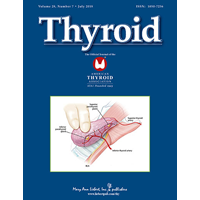Abstract
Purpose
Benign insulinomas are the most prevalent cause of endogenous hyperinsulinaemic hypoglycaemia (EHH) in adults, and because of their small size are difficult to localise. The purpose of the study was to test the diagnostic accuracy and clinical impact of glucagon-like peptide-1 receptor (GLP-1R) PET/CT using 68Ga-DOTA-exendin-4 in consecutive adult patients referred for localisation of insulinomas. The results were compared with 111In-DOTA-exendin-4 SPECT/CT, study-MRI and previously performed external CT and/or MRI (prior external CT/MRI).
Methods
We prospectively enrolled patients with neuroglycopenic symptoms due to EHH. GLP-1R PET/CT, SPECT/CT and study-MRI were performed in a randomised, crossover order within 3–4 days. The reference standard was surgery with histology and treatment outcome.
Results
From January 2014 until March 2017, 52 patients were recruited. All imaging and invasive procedures before recruitment identified suspicious lesions in 46.2% of patients. GLP-1R PET/CT, SPECT/CT and study-MRI detected suspicious lesions in 78.8%, 63.5% and 63.4% of patients, respectively. In 38 patients, conclusive histology was available for final analysis.
Accuracy (95% confidence interval) for PET/CT, SPECT/CT, study-MRI and prior external CT/MRI was 93.9% (87.8–97.5%), 67.5% (58.1–76.0%), 67.6% (58.0–76.1%) and 40.0% (23.9–57.9%), respectively (all P values < 0.01, except comparison of SPECT/CT and study-MRI with a P value = 1.0). Impact on clinical management was 42.3%, 32.7% and 33.3% for PET/CT, SPECT/CT and study-MRI, respectively. Percentage reading agreement was 89.5%, 75.7%, and 71.1% for PET/CT, SPECT/CT and study-MRI, respectively.
Conclusion
68Ga-DOTA-exendin-4 PET/CT performed significantly better than 111In-DOTA-exendin-4 SPECT/CT and MRI in the localisation of benign insulinomas and should be considered in patients where localisation fails with CT/MRI (ClinicalTrials.gov, NCT02127541).
https://ift.tt/2mKWr2u



